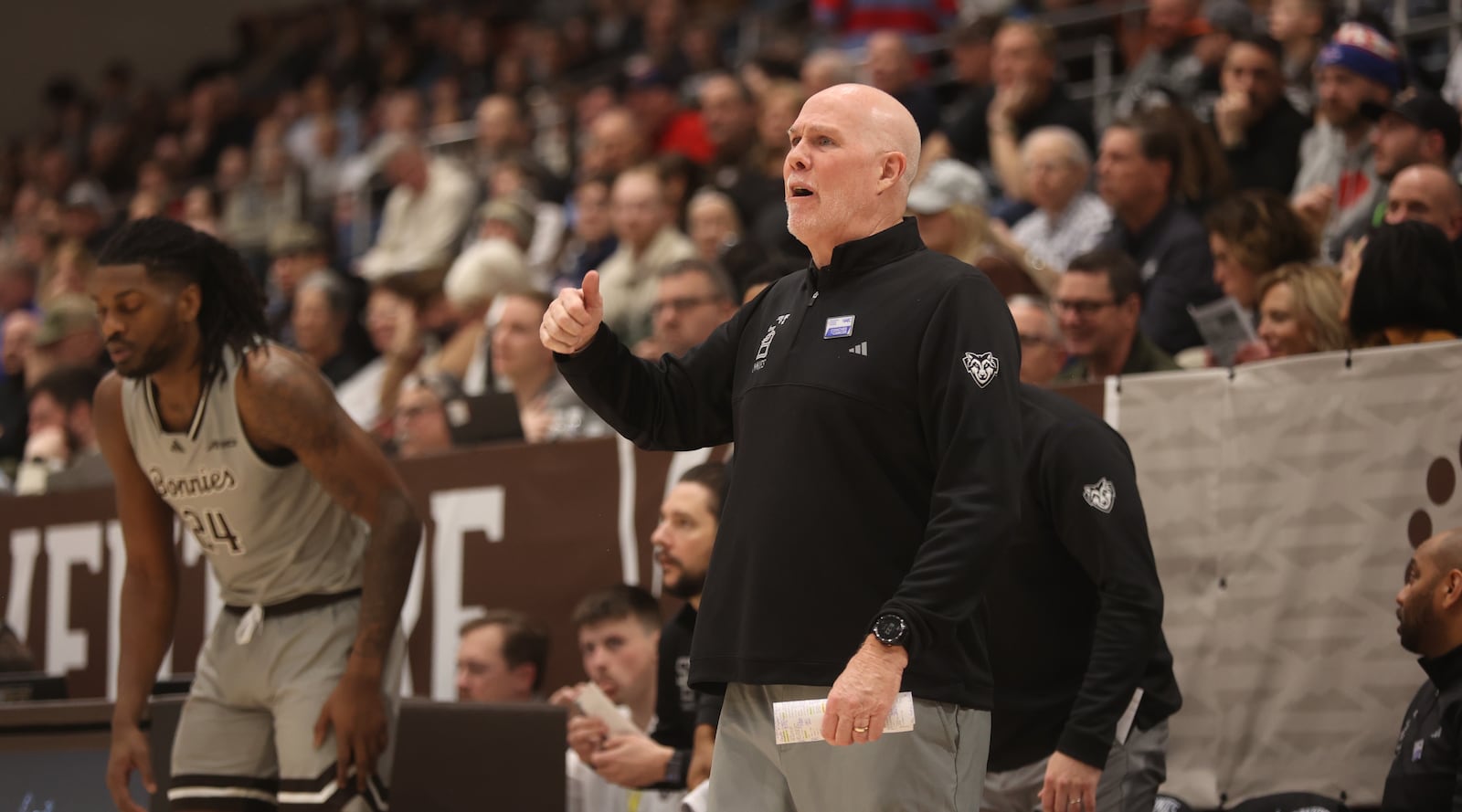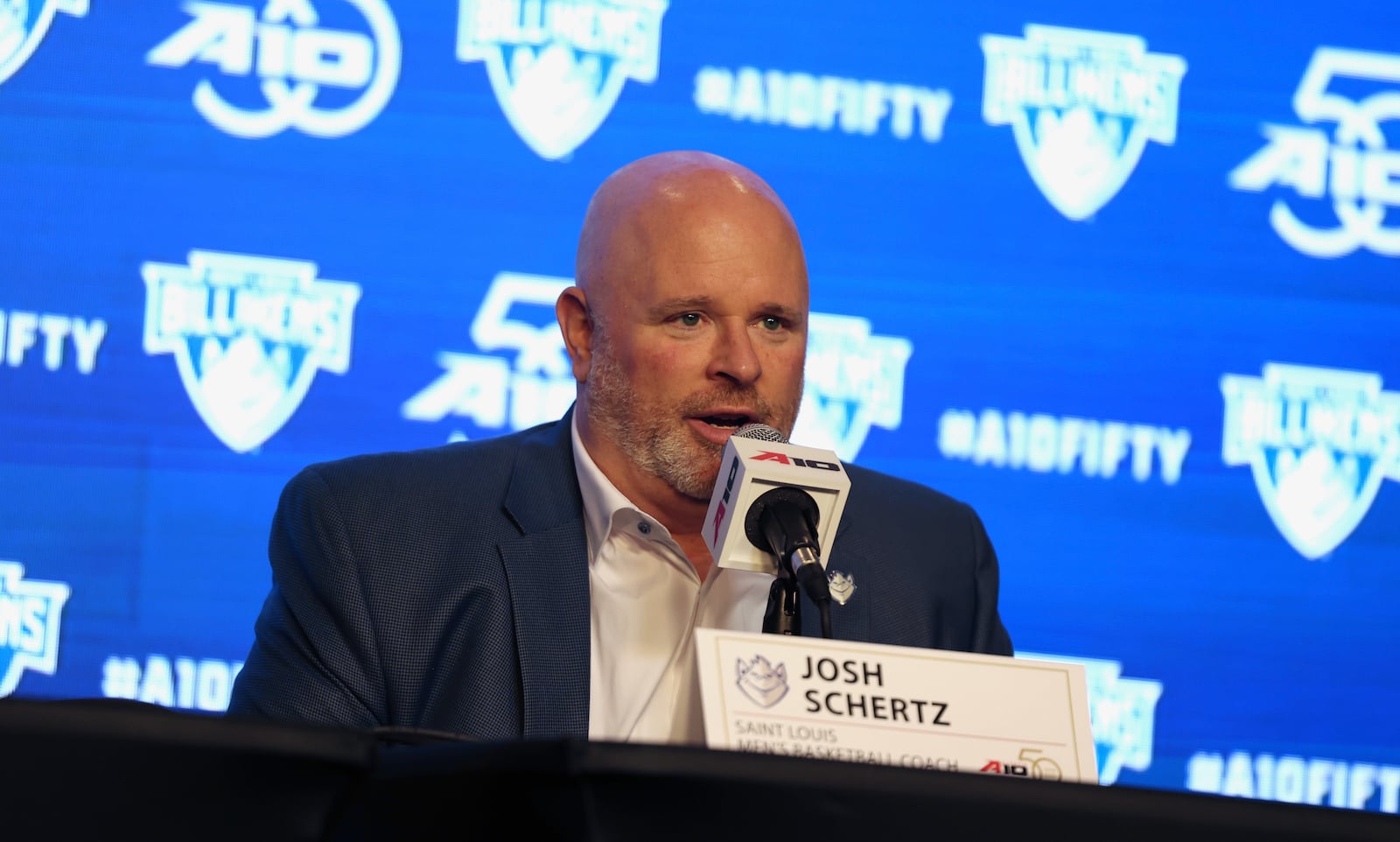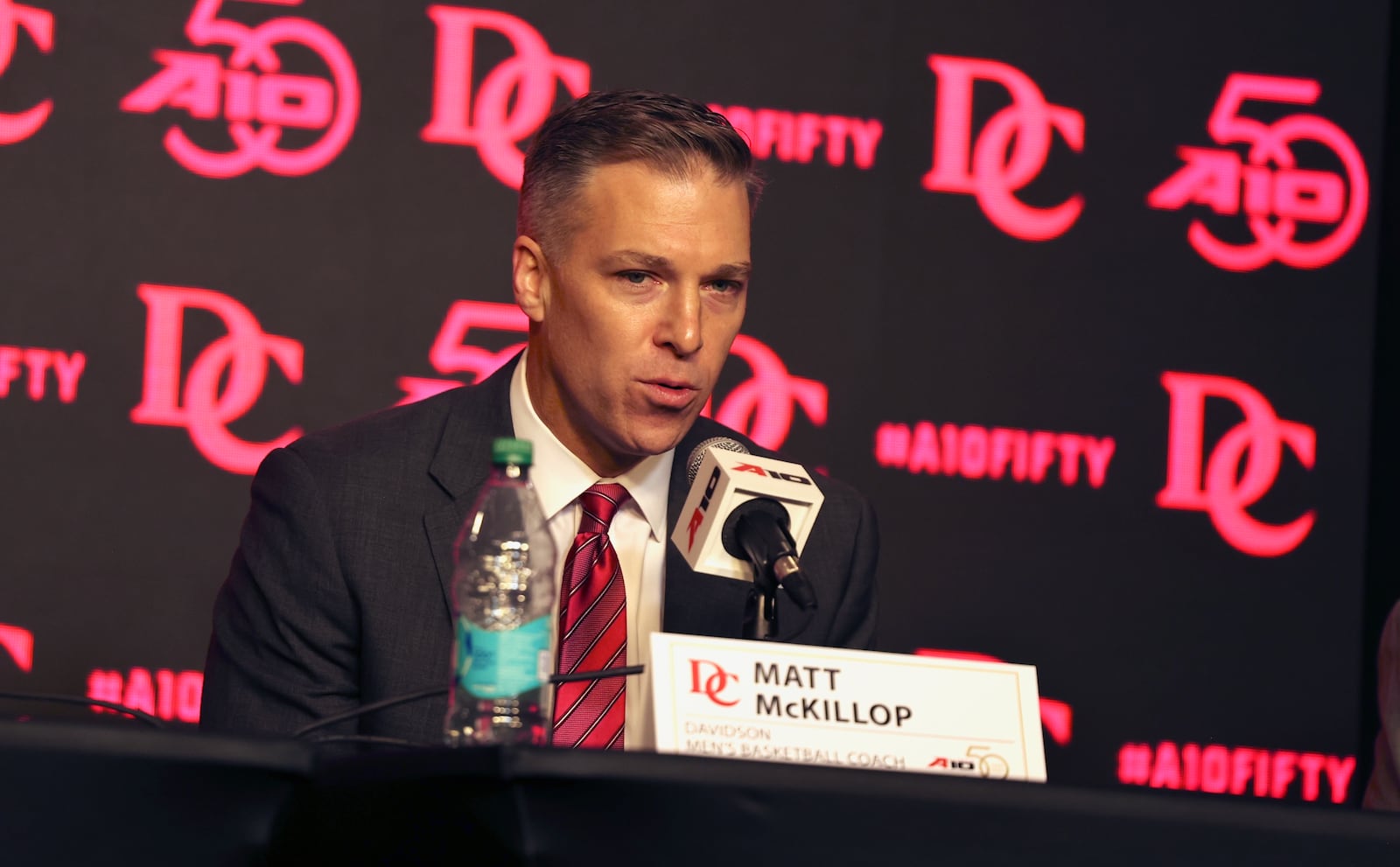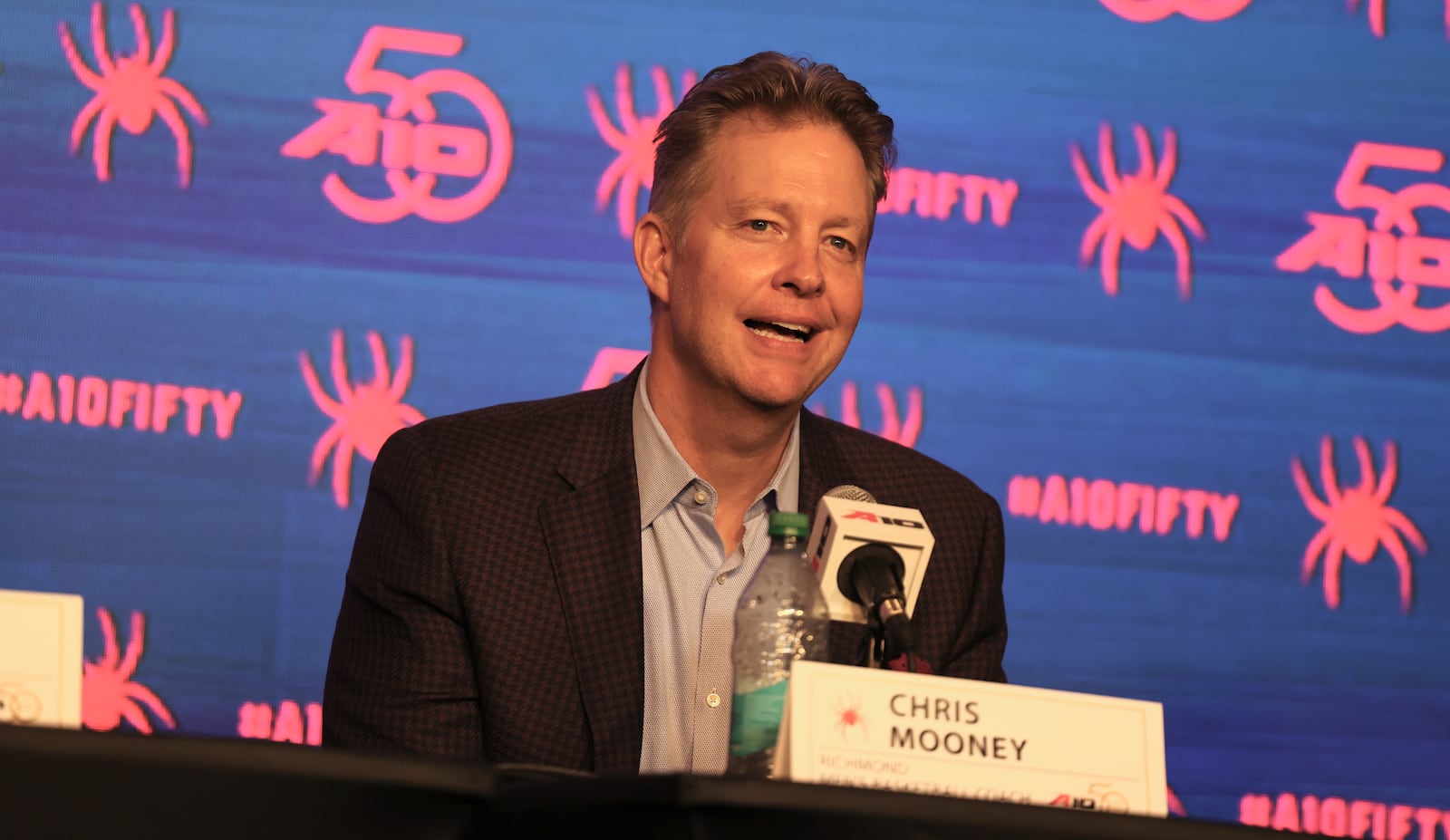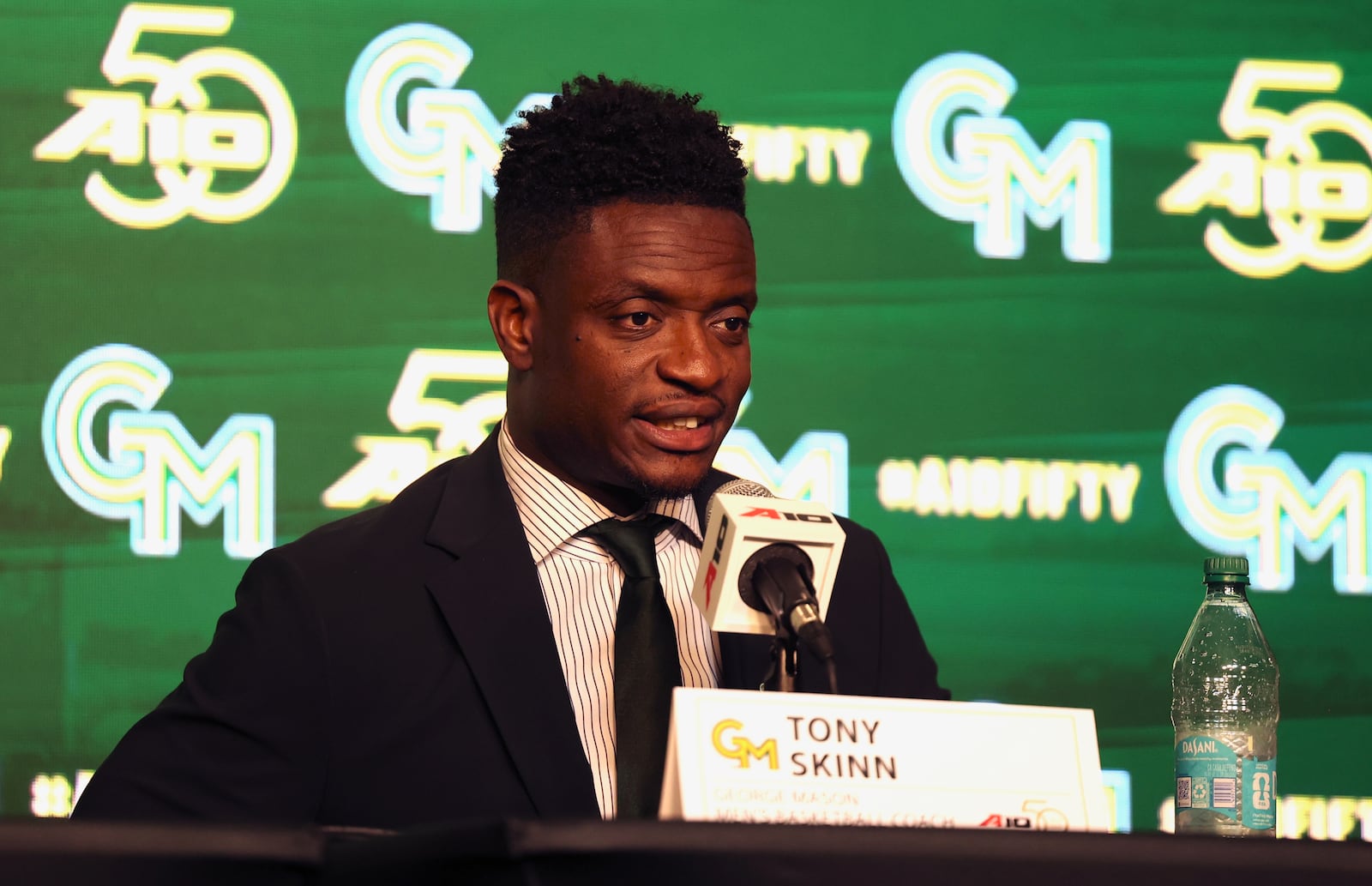“We’re ready,” Sullivan said, “I’m confident we’re going to be well positioned. That doesn’t mean it doesn’t keep me up at night, or that anything’s easy, but we have a legacy of a fan base. We have a healthy program. We have a university that believes in athletics and believes in basketball. We have alignment there. We have a community that supports it. So we’re going to be aggressive. We’re going to be bold.
“I tell people, ‘Scared money doesn’t make money.’ This is not for the faint of heart. You have to be responsible and appropriate, but that has to be balanced with a certain level of aggressiveness. We tried to take that approach this year with (men’s basketball) scheduling. You’ve got to roll some dice to be able to do what we want to try to keep doing. So, yeah, I’m confident and feel prepared, but that is not a statement of naivety or arrogance that this will be anything but challenging.”
Dayton took an aggressive step of sorts by hiring one of its most famous basketball alums, Jim Paxson, as a senior advisor of basketball operations in October. His decades of experience in NBA front offices will give UD another voice when it comes to negotiating contracts with potential recruits and current players.
Across the Atlantic 10 Conferences, other programs have taken similar steps. St. Bonaventure hired famed NBA reporter Adrian Wojnarowski, as general manager in 2024. Davidson hired its most famous alum, Steph Curry, as an assistant general manager in March.
The $2.8 billion settlement in June allowed schools to distribute up to 22% of their average revenue to student-athletes. The cap for the 2025-26 school year is $20.5 million. That will increase by 4% the next two years and be re-evaluated every three years over the next 10 years.
A-10 schools do not have that kind of money to throw at athletes. The $20.5 million number is for football schools in the power conferences.
How much will A-10 schools pay athletes? That’s hard to say. Sullivan did not want to get into specifics. As a private school, Dayton does not have to be public about how it spends its money. Some information is available through non-profit tax returns. Head men’s basketball coach Anthony Grant, for example, made $2,482,733 in the fiscal year that ended in June 2024.
Virginia Commonwealth is spending close to $5 million annually on athletes, according to reports by the Richmond Times-Dispatch, though not all that money is going to men’s basketball players.
In some ways, the A-10 has an advantage because it can devote a large share of its revenue to men’s basketball, whereas schools in the power conferences will have to spend most of their money on football to stay competitive.
“We’re a basketball-centric league,” A-10 Commissioner Bernadette V. McGlade said in October in a story by Seth Davis on Atlantic10.com. “We’ve made no bones about that. We’ve always been that way. The fact that we don’t have to be providing NIL money to football student-athletes allows us an opportunity. We still don’t have budgets as large as they have because we don’t have the (College Football Playoff) revenue, but we can provide what would be considered fair market value to men’s and women’s basketball players that could help level out the playing field.”
Despite the upheaval off the court, on the court, once the games and practices begin, it’s basketball as usual. Dayton Flyers coach Anthony Grant won’t treat his players any differently even if they are, in many respects, now professional basketball players.
“Putting the team together is probably the biggest difference,” Grant said. “The recruiting process is a lot different than it was five years ago.”
Many of the A-10 coaches spoke about how well positioned their programs are in the new era and how coaching has changed in this new era at the league’s annual Media Day event Sept. 30 in Pittsburgh.
Here’s a look at what they had to say:
Credit: David Jablonski
Credit: David Jablonski
Phil Martelli Jr., Virginia Commonwealth: For as long as I’ve known VCU — and that goes back quite a ways — they’ve always been on the forefront of everything. When they joined the Atlantic 10, I remember a conversation with my father. I was in the CAA (Colonial Athletic Association) at the time as an assistant in Delaware, and I remember him saying, ‘They’re coming into the league, and they’re at the top of everything. All these numbers, recruiting budgets and salaries and things like that.’
So VCU has always been positioned well, and that is a credit to Ed McLaughlin, our athletic director, Dr. (Michael) Rao, our president, to the board, to all these people that have made sure that VCU has stayed at the top of all those things. When my brother (Jimmy) was here with Mike Rhoades, I’d call him and go, ‘What are you guys doing?’ Because they were always ahead of it. He would say, ‘Yeah, we talked about it six months ago, and this is what we’re doing now.’
I was at places where you couldn’t do what they had the capabilities of doing. We’re very well positioned (at VCU). I joke about it, but it’s true. They ask me at times, ‘What else do you need?’ And I look around and go, ‘What else could I possibly ask for?’ Am I supposed to ask for a spaceship? Call NASA. We want to fly to Dayton in a spaceship instead of a regular plane. And, honestly, if I asked, they wouldn’t look at me like I was crazy. Now they might think I was crazy, but they would turn around and go, ‘All right, we’ll call and ask.’
Some places you hit that ‘no’ quickly. Here it’s, ‘Let’s see what we can do.’ The way that we’re treated as a staff, the way that our players are treated, the way our program is treated, is top of line, and it’s a credit to all the people that make sure that VCU basketball has what it needs to be successful.
Credit: David Jablonski
Credit: David Jablonski
Mark Schmidt, St. Bonaventure: You don’t treat (athletes) any differently. Coach them. Coach them hard. Nothing’s changed with that. It’s just that you have new players every year. Usually, you have a freshman who becomes a sophomore, and then you gradually put more stuff in. You’re not as complicated because, in essence, you’re having kids for six months, and really, all your stuff has to be in early. You can make some adjustments, but you don’t run as many sets, or at least, we don’t run as many sets. We really made it less complicated, and that’s the difference.
Credit: David Jablonski
Credit: David Jablonski
Drew Valentine, Loyola Chicago: First of all, I’m so happy for these guys, and I think they should earn and be paid because they sacrifice a lot. I’m a huge fan of that. I think there’s a lot of things behind the scenes that have changed for us. We’re dealing with agents now. Before, if you knew a guy had an agent, it was, ‘We’re not doing that,’ or there were some people that did that but, but I never did that. I think dealing with that, dealing with the payroll, there’s just so many different things that you have to concentrate on and try to learn how to be good at. But again I’m excited for these guys that they get to earn based on their abilities and their talent.
Credit: David Jablonski
Credit: David Jablonski
Josh Schertz, Saint Louis: I think we’re well positioned. I know the league is. There’s a great commitment, institutionally, from our board of trustees to our president to our athletic director, Chris May, on down, to understanding the importance of men’s basketball and the commitment levels there. We talk a lot about the mutual commitment of our players to the school and school to the players, and we feel really comfortable with where we are and certainly where we’re going. I think it’s at the beginning, but we’re certainly in a much better situation than we were when I got here, and I think we’ll continue to improve that.
In terms of coaching guys, honestly, I get asked that some, but I haven’t changed. At the end of the day, you have to really coach guys in a way that you’re honest with them. Players always know if you genuinely care about them, authentically — not just as a player, but as a human being — and if they feel like they can trust you, that what you tell them they can take to the bank, that they feel you’re confident as a coach and that you can help them individually become the best player they can be and you can help the group collectively become the best version of its self. Ultimately, for them individually, to get what they want, all that’s downstream of team success.
You’ve got to be able to make them a better player and help the team win. Players will buy in and do what you need them to do, and you can coach them hard, as long as you do it in a way that is respectful. That hasn’t changed from my time in Division II to now. It’s the same approach. I have to build that with each player. They’ve got to know they can trust me.
Matt McKillop, Davidson: It’s allowed us to put together a good team. I believe we’re competitive in our league, and we’ve been really fortunate to have two of our alumni — Steph Curry being one of them, and Matt Berman and the Berman family being another one — create an endowment that has allowed us to attack the new world of college athletics.
The ultimate goal is that we recruit the right kids and we keep them all here. This year, we have four transfers, and they’re the kind of kids that we would have loved to have had as freshmen in terms of how well they fit on the court and off the court around the Davidson campus and Davidson community. I don’t know enough really about the rosters of other teams, except for some names here and there, but I’m thrilled about what this year could be.
Credit: David Jablonski
Credit: David Jablonski
Chris Mooney, Richmond: I think Richmond is very well positioned. The school has tremendous resources. We’ve had some incredibly successful philanthropic donors over the years. And basketball has always been very, very important to athletics as a whole. It’s certainly such a new era, and it has changed so quickly. In higher education, at a private school like Richmond, this would be more of a 10-year plan, whereas this has just changed almost overnight.
Credit: David Jablonski
Credit: David Jablonski
Archie Miller, Rhode Island: I don’t know if anyone is truly ready because the rules change almost every six months. Two or three years ago, we were hell-bent on retention. You’re recruiting and getting guys older. Those were really the things to go by in the old model.
Now you can transfer anytime you want. You don’t have to sit anymore. It’s been a constant evolution. I’m really thankful for our president and our AD because I think we have a great working relationship. We constantly have dialog about how to do better and what more we can do.
We’re climbing. I don’t think, by any stretch of the imagination, we’re where we want to be, but I don’t know if anybody is. I think we’re in a better place now than we’ve ever been before, and I think at the end of the day, some of the results of the recruiting will pay some dividends. Hopefully, we’ll be able to keep more players over the course of time. That’s been a challenge. In this new world, it doesn’t really matter who you are, you’re going to have your own issues.
Tony Skinn, George Mason: Honestly, we’re in a good spot. It starts with our leadership. (President Gregory Washington) has been behind me. He hired me. It also goes down to our athletic director, Marvin Lewis, who’s been very strategic. I do know this, in the two years I’ve been here, we’ve been competitive, and we’ve reset the standard at George Mason, winning 47 games, and that support is a major reason why we’ve been successful. We’re going to continue to be progressive in this landscape.
About the Author

